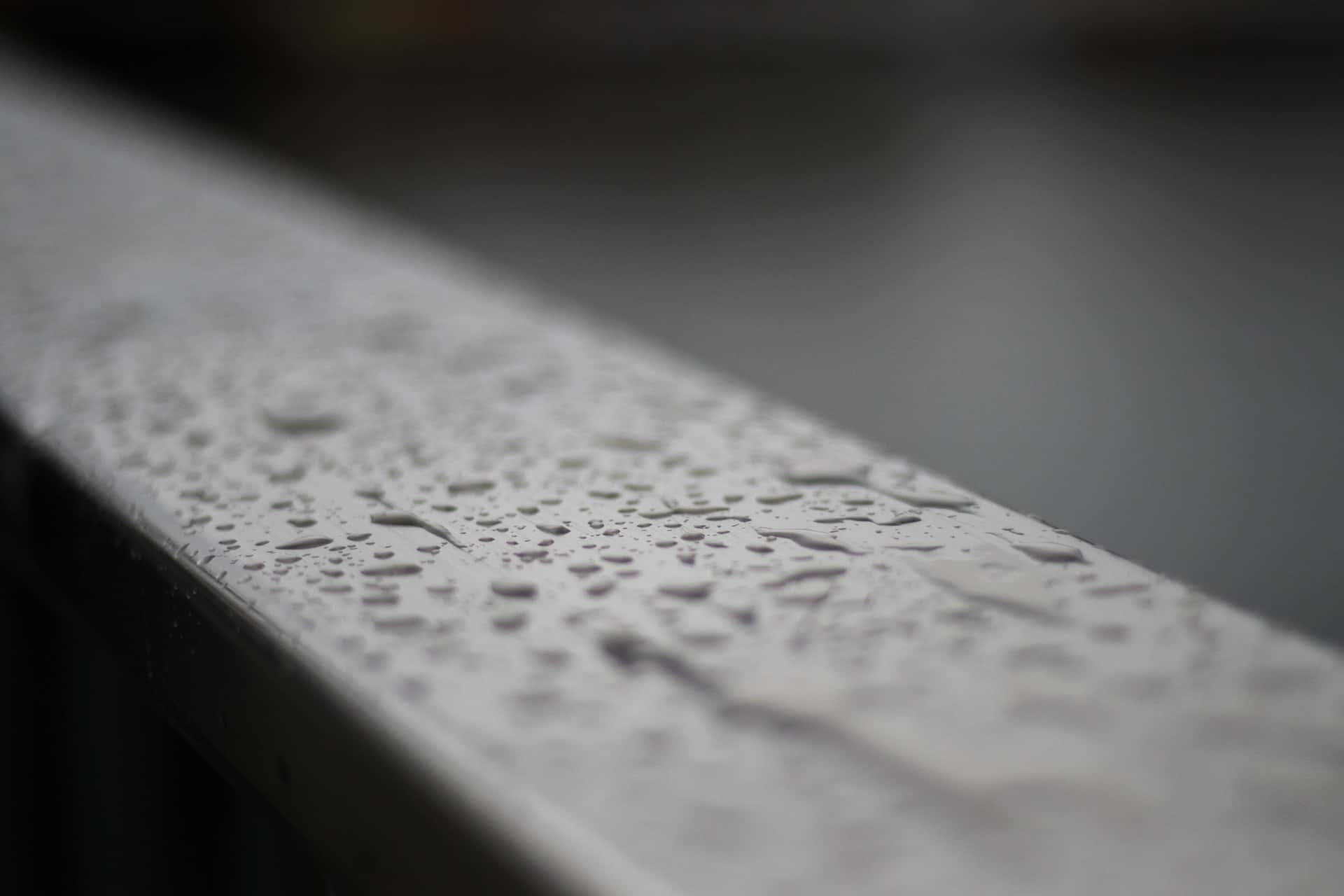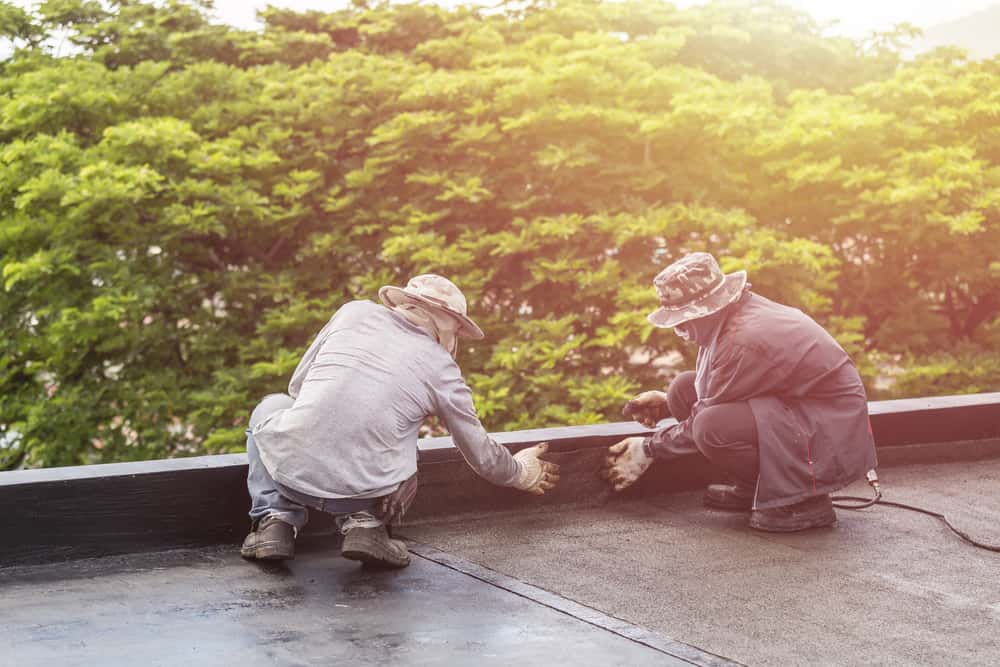Looking for roof waterproofing ideas to safeguard your home? After all, your roof is the one area that bears the brunt of rainfall every now and then.
Adding to the complexity, most roofs in India are flat roofs in nature. This makes water drainage a big issue during the monsoons.

Whether you want to engage in balcony waterproofing or want to understand the right kind of chemical waterproofing solution to go for, leveraging the correct waterproofing system for your terrace is key.
In this blog, we will understand what terrace waterproofing is and how it can be done. Let’s get going.
So, What Is Terrace Waterproofing Exactly?
Let’s start with the very basics of understanding what terrace waterproofing entails.
Terrace waterproofing is an essential exterior home care maintenance step that prevents leakages and does not allow rainwater to seep into your home. Your roof is constantly bombarded with excess rain and heat damage due to excessive sunshine, cracks, dents, damp areas, and mould growth.
This can lead to structural damage and a gap in your roof.
As a responsible homeowner, you must deploy the services of a seasoned terrace waterproofing professional who will inspect your roof for damaged, missing, and/or ageing shingles. More importantly, they will make the necessary repairs and help you course-correct as needed.
One way to protect your roof is by waterproofing it. Generally, the professional will apply a protective layer of waterproofing membrane to:
- Avoid water leakage from the terrace to the home
- Prevent decay and deterioration of your roof’s structure due to heat and water damage
- To maintain the visual aesthetic of your home and safeguard your life’s investment
- To boost the longevity of the roof
- Prevent the formation of mould and stop tiny cracks from developing on the surface in the long run
The Two Types of Flat Roof Terrace Waterproofing Methods
1. Modern Terrace Waterproofing Ideas
The first terrace waterproofing method we will cover is modern ways to waterproof your terrace and balcony, which include:
Modern Waterproofing Method |
Characteristics and Steps |
| 1. Bituminous Roof Waterproofing |
This is how the process works: Step 1: An expert will use roofing felt that is saturated using bitumen and applied to the roof. Step 2: Then, they will fix it to the surface with the help of fire. They might also use other additives so that the bitumen mixture is waterproof and also flexible. Key disadvantages of this roof waterproofing method include the following:
|
| 2. Liquid Deck Roof Waterproofing |
|
| 3. Acrylic-Based Roof Waterproofing Coats |
|
2. Traditional Terrace Waterproofing Ideas
The traditional or more conventional methods of terrace waterproofing include:
Traditional Waterproofing Method |
Characteristics and Steps |
| 1. Brickbat Coba Method |
Step 1: Flat bricks are spread out on the roof, maintaining a 15-20 mm gap between two bricks Step 2: Using cement, the bricks are glued to the ground. They are then left to dry. Step 3: Once dry, the professional will use a mixture of water-based sealant compounds. They will also add cement and water to make it dense. Step 4: This slurry mixture is spread across the roof, which includes filling in the gaps. This is then left to cure. Step 5: Water is poured into the roof when it is curing and it should be allowed to stay as is for at least two weeks.
|
| 2. Lime Terracing Method |
Step 1: The concrete is laid layer-wise on the flat roof. Step 2: The concrete layer is sprayed with a lime molasses mix to aid in the process of waterproofing. Step 3: The completed roof undergoes curing and must be watered in two-week intervals.
|
| 3. Mud Phuska Method |
Step 1: The waterproofing solution is made by using clay as well as bhusa sand. Step 2: The completed layer is plastered by leveraging a mixture of cow dung and mud. Step 3: In order for it to remain waterproof, the finished layer must be accurately cured.
|
Top Tips for Terrace Leakage Waterproofing
Here are some of the most effective tips to follow when it comes to terrace waterproofing:
- If you have a flat, open terrace design and experience heavy rainfall, waterproofing is a must for you.
- When undergoing roof inspection, make sure to check for other problems that might be causing structural damages, such as pipes that cause leakages, damp patches on the ceiling, lack of proper water outlets, lack of a slope, and presence of internal cracks in the roof.
- You can also engage in deck waterproofing and patio waterproofing.
- Invest in the right waterproofing sealant after consulting a professional–this small step will make a big difference in the result.
- If you have cracks or dents in the exterior wall or roof of your home, make sure to repair it immediately.
Conclusion
Like the other areas of your home, your terrace should be protected as well, particularly due to harsh weather such as excess sunlight and rain. This is where terrace waterproofing comes in handy.
If your waterproofing is not sound, you run the risk of water seeping into the cracks on the walls and developing mould. This is why applying a waterproof coating becomes beneficial.
For more ideas on balcony designs or terrace waterproofing tips, head over to HomeLane today!
FAQs
1. Why Is Terrace Waterproofing Necessary?
Terrace waterproofing or balcony waterproofing is essential as it doubles up as a protective membrane for your roof. This membrane will protect your roof from wear and tear caused by external environmental changes and prevent water leakage due to excessive rain.
In the end, you will gain by not only extending the life of your roof but also saving on costs related to roof repair and maintenance.
2. Which Waterproofing Material Should I Buy for Waterproofing My Home’s Terrace?
According to experts, the best waterproofing material for terrace waterproofing Indian homes is an acrylic-based waterproofing solution. You can also go for the bituminous membranes, which are the most popular systems used to waterproof terraces and balconies.
It is important to get your roof inspected by a professional who will suggest the next best course of action and guide you correctly.
3. Which Is The Best Water Proofing Treatment for Terrace?
Generally speaking, bitumen is an excellent waterproofing material as it is easy to apply, cost-effective, and versatile in nature. You can go for a bitumen-based liquid membrane or a bitumen-based roll membrane material for high-performance roof insulation.




